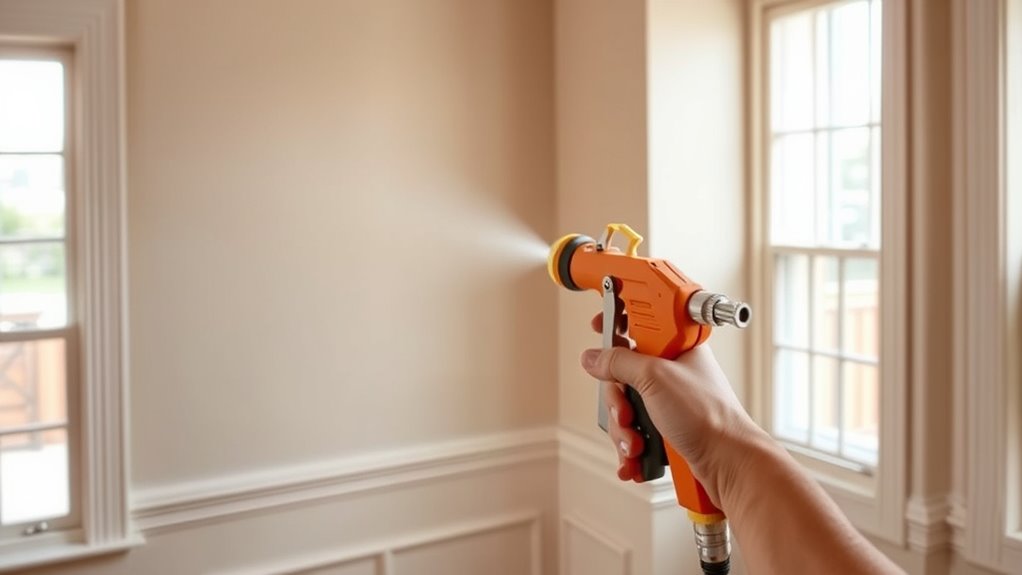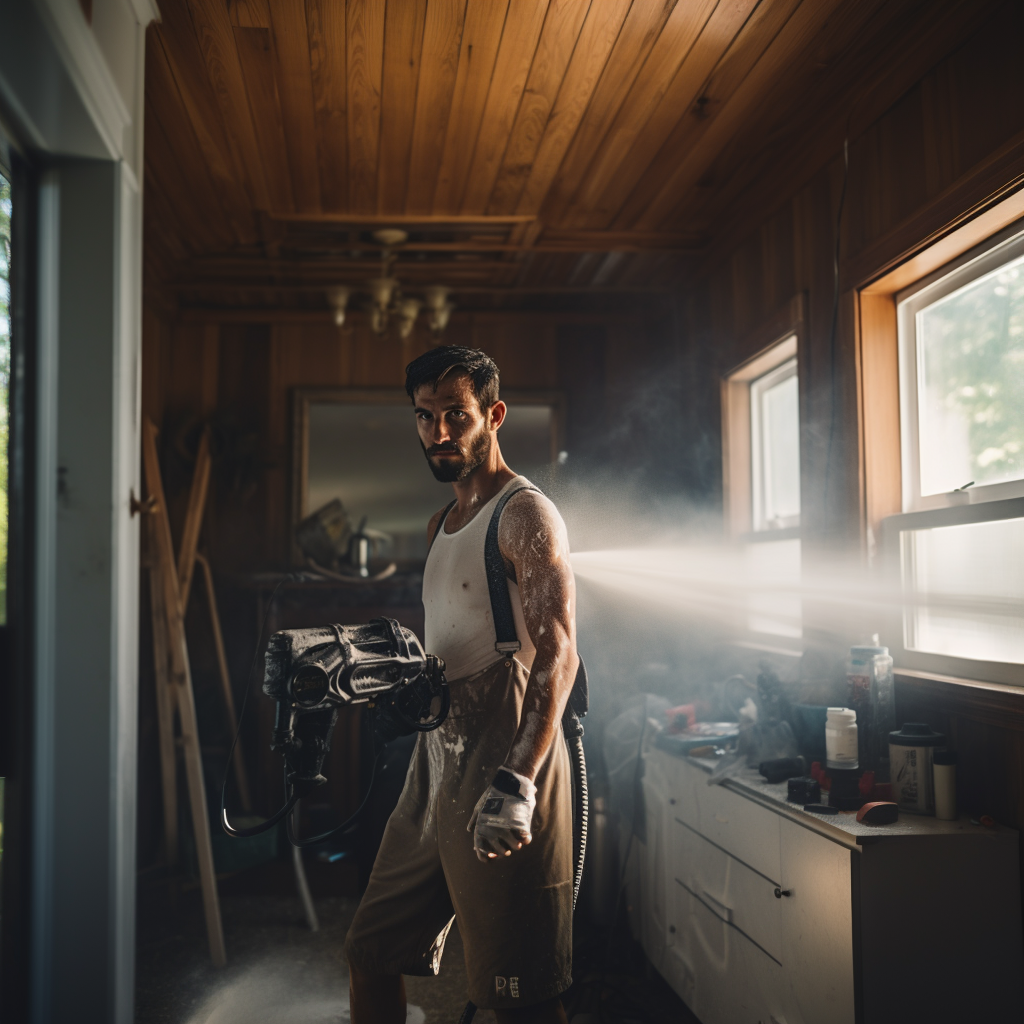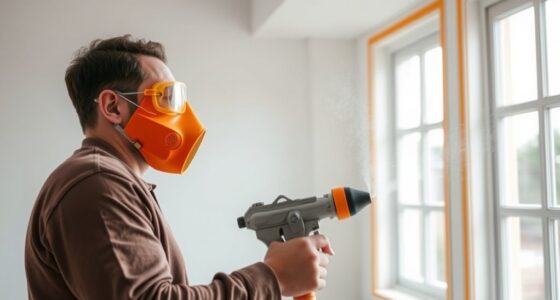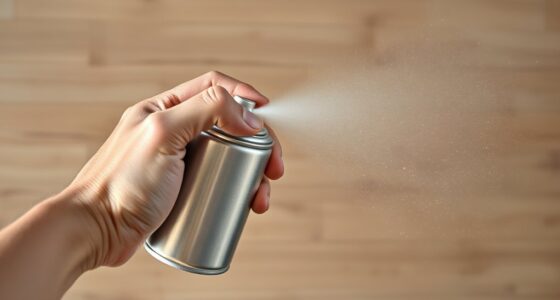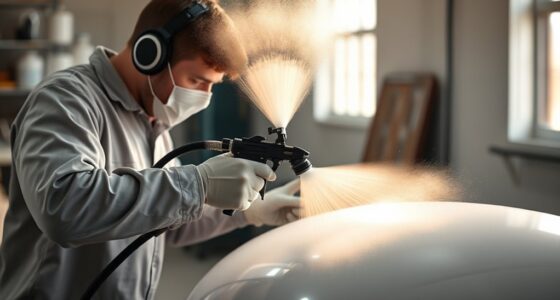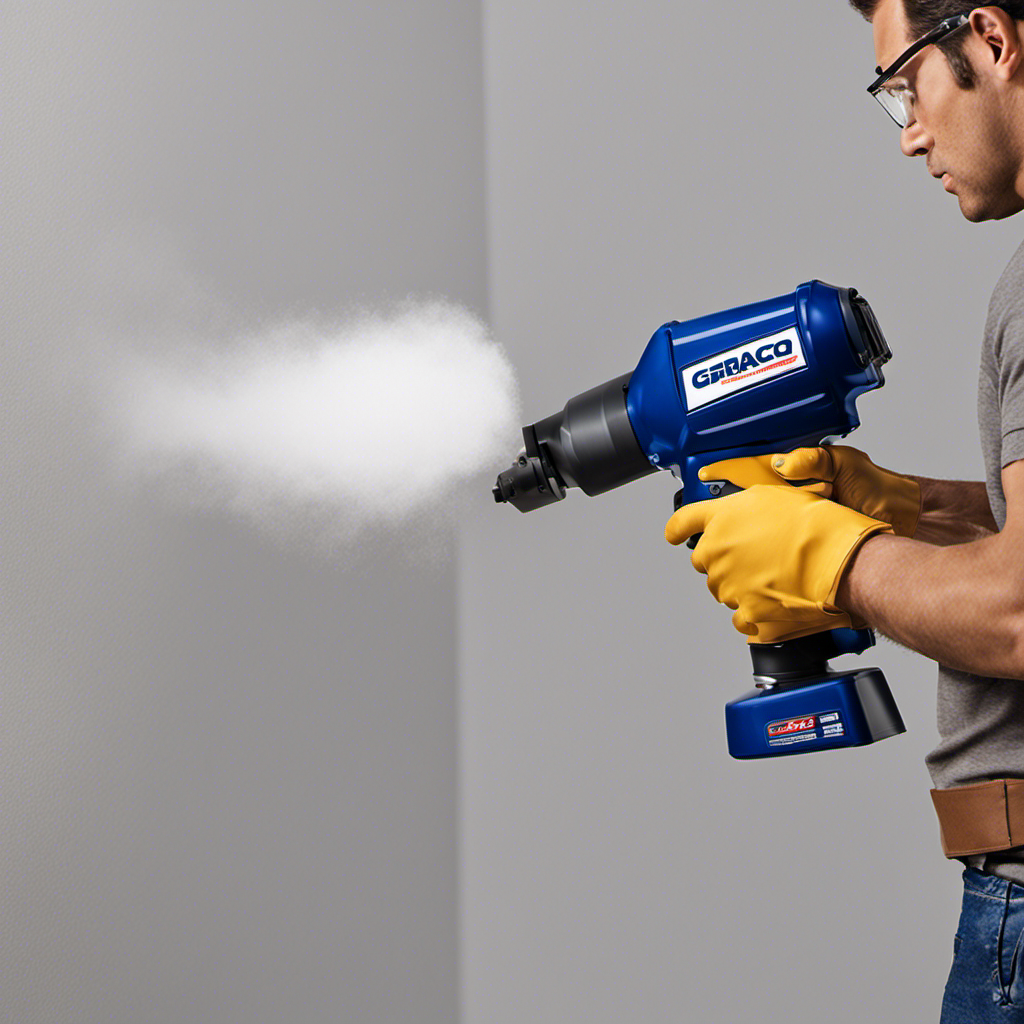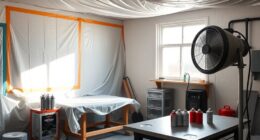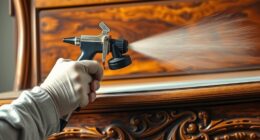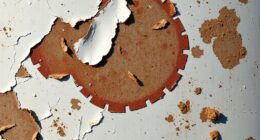To spray interior walls without overspray, start by thoroughly preparing your equipment—clean the spray gun, check filters, and maintain consistent pressure. Choose the right nozzle size for your project, and set your gun to match paint viscosity. Keep a steady, smooth motion, and maintain a consistent gun-to-wall distance of about 10-12 inches. Practice your technique to guarantee even coverage, and you’ll achieve a professional finish with minimal mess as you explore more effective spray methods.
Key Takeaways
- Maintain a steady, continuous motion to prevent excess paint and overspray.
- Keep the spray gun at a consistent 10-12 inch distance from the wall.
- Use the appropriate spray pattern width based on the surface area for even coverage.
- Adjust spray pressure and nozzle size to match your paint type and wall size.
- Practice on scrap surfaces to refine your technique and prevent overspray during the actual job.
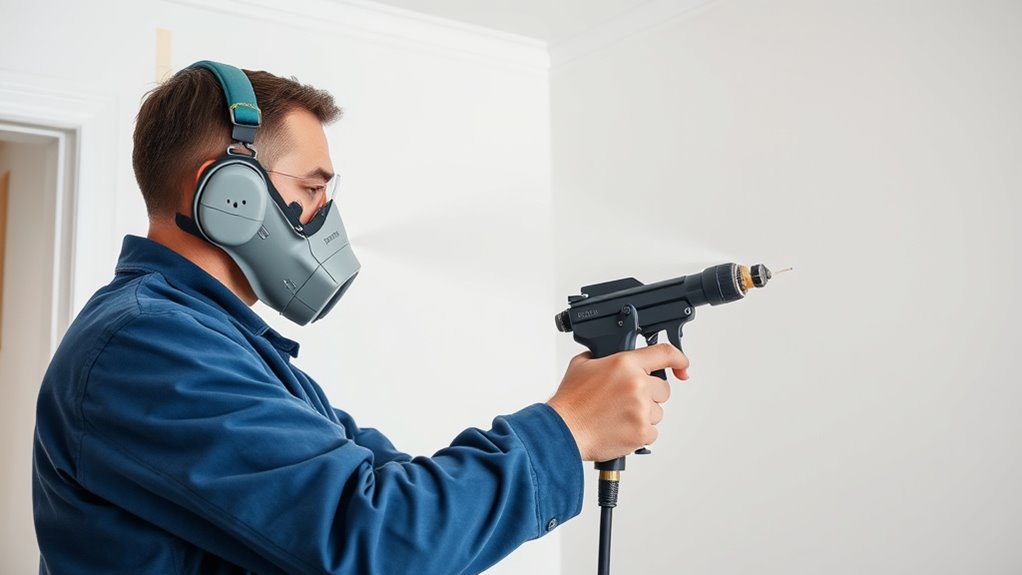
Are you ready to achieve a smooth, professional finish on your interior walls? The key to successful spraying lies in proper preparation, especially when it comes to your equipment. Spray gun maintenance is essential for ensuring consistent results and minimizing overspray. Before you start, take the time to clean your spray gun thoroughly. Residual paint or debris can cause uneven spray patterns, leading to more overspray and a rough finish. Regular maintenance also prevents clogs, which can disrupt the atomization process and reduce control. Keep your air filters clean, check all hoses for leaks, and lubricate moving parts as needed. When your equipment is in top shape, you’ll find it easier to control the spray pattern and apply paint evenly.
Choosing the right nozzle is another critical step in achieving a professional look and reducing overspray. Nozzles come in various sizes and types, each suited for different paint viscosities and spray techniques. A smaller nozzle, such as a 1.5mm or 1.8mm, is ideal for fine finishes and detail work, while larger nozzles, like 2.0mm or 2.5mm, work better for thicker paints or larger surfaces. Make sure to select a nozzle compatible with your spray gun and the type of paint you’re using. When choosing the right nozzle, consider the spray pattern you want—narrow for detailed areas or wider for large, flat surfaces. Using the correct nozzle size helps you control the amount of paint applied and minimizes excess spray, which can end up on unintended surfaces.
Once you’ve selected the appropriate nozzle, practice on a scrap piece or a hidden section of the wall. Adjust your spray gun’s pressure settings to match your nozzle size and paint type. The goal is to create a consistent, fan-shaped spray pattern with minimal overspray. Keep your distance from the wall—usually around 10 to 12 inches—and move your gun smoothly and steadily. Avoid stopping and starting abruptly, as this can cause uneven coverage and drips. Maintaining steady motion and correct pressure helps you keep overspray at bay and achieve a clean, smooth finish.
Frequently Asked Questions
What Type of Spray Gun Is Best for Interior Walls?
You should choose a detail spray gun or a HVLP (High Volume Low Pressure) spray gun for interior walls, as they offer better control and less overspray. Opt for a gun with adjustable nozzle sizes, typically between 1.3 to 1.8mm, to suit different paint types and wall textures. These spray gun types and nozzle options help you achieve smooth, even coverage without mess.
How Do I Prepare Furniture and Floors Before Spraying?
You should start by protecting your furniture and floors with appropriate coverings. Cover furniture with plastic sheeting or drop cloths, ensuring all items are fully shielded from paint. Use sturdy floor coverings like drop cloths or painter’s tarps to catch drips and overspray. Secure the coverings with painter’s tape to prevent movement. This way, you keep your space clean and avoid accidental paint damage during the spraying process.
Can I Use Spray Paint on Textured Walls?
Yes, you can use spray paint on textured walls, but consider texture considerations and paint compatibility first. The rough surface can cause uneven coverage, so choose a spray with a fine mist and adjust your technique accordingly. Opt for paints formulated for textured surfaces to guarantee proper adhesion and finish. Test on a small area to see how the spray interacts with the texture before covering the entire wall.
What’s the Ideal Temperature and Humidity for Spraying?
You should aim for a temperature between 50-85°F and keep humidity levels around 40-50% for ideal spray painting. Proper temperature control prevents paint from drying too quickly or unevenly, ensuring a smooth finish. Humidity management helps avoid drips and runs. Check your local weather forecast and use fans or dehumidifiers if necessary to maintain these conditions, giving you the best results with minimal overspray and a professional look.
How Do I Clean Spray Equipment Properly After Use?
After you finish spraying, think of your spray booth as a fresh canvas. First, flush your equipment with an appropriate solvent to remove excess paint, then dismantle the spray gun and clean all parts thoroughly. Pay close attention to the paint viscosity, ensuring no clogs remain. Properly cleaning your spray equipment preserves its performance, making your next project smoother and more efficient. Always dry and store your tools properly.
Conclusion
By following these tips, you’ll achieve smooth, professional-looking walls without the mess of overspray. Remember, proper preparation and technique make all the difference. Did you know that nearly 30% of paint is wasted due to overspray and drips? Avoid becoming part of that statistic by spraying carefully and using the right tools. With patience and practice, you’ll enjoy a flawless finish that transforms your space without the hassle or waste.
Franz came aboard the Paint Sprayer Zone team with a background in both journalism and home renovation. His articulate writing style, combined with a passion for DIY projects, makes him an invaluable asset. Franz has a knack for breaking down technical jargon into easy-to-understand content, ensuring that even the most novice of readers can grasp the complexities of paint sprayers.
